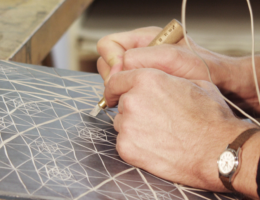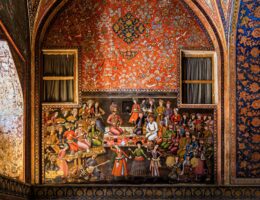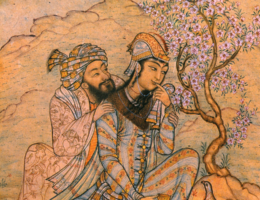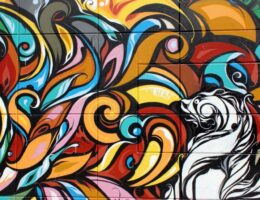IRAN ART EXHIBITION: PRINTMAKING IS AN ART THAT YOU WILL LOVE IT!
Printmaking is an artistic process based on the principle of transferring images from a matrix onto another surface, most often paper or fabric. Traditional printmaking techniques include woodcut, etching, engraving, and lithography, while modern artists have expanded available techniques to include screenprinting.
A matrix is essentially a template, and can be made of wood, metal, or glass. The design is created on the matrix by working its flat surface with either tools or chemicals. The matrix is then inked in order to transfer it onto the desired surface. To print from a matrix requires the application of controlled pressure, most often achieved by using a printing press, which creates an even impression of the design when it is printed onto the paper or fabric. (More modern printmaking techniques, such as screenprinting, do not require a press.) The resulting print is often the mirror image of the original design on the matrix. One of the great benefits of printmaking (save for monotype) is that multiple impressions of the same design can be printed from a single matrix.
Printmaking has helped shape culture in all parts of the world. Originally used as a form of communication, printmaking is a valued artistic medium with unique technical qualities. To make a print, the artist typically creates an image on a flat surface. The surface is then inked, and pressed onto paper to create an original print. By repeating the printing process, the artist is able to create multiple original works of art.
The first prints are attributed to prehistoric times, when humans placed used their hands as stencils by placing them on cave walls and blowing pulverized pigment around them to create repeatable images. In approximately 500 BC, Sumerians carved images on cylinder seals that could be pressed into wet clay, thereby creating multiple imprints to indicate the ownership of goods. Chinese scholars created rubbings from carved texts around 200 AD, an early form of printing that could be done on paper and silk.
Because it’s affordable and suitable to printing, the invention of paper is a hugely important moment in the history of printmaking. As papermaking techniques spread from China to the rest of Asia, the Middle East, and Europe, printmaking became increasingly widespread and technologically sophisticated.
Printmaking initially flourished as a form of communication, for it enabled artists to disseminate artwork to large numbers of people. Starting in the eighth century, Japanese artists used printmaking to make multiples of Buddhist manuscripts. In fourteenth century Europe, woodcut prints became a popular way to distribute Christian images to the common people because acquiring a print was more affordable than acquiring an oil painting. In the fifteenth century, Gutenberg’s printed Bible ushered in a whole new era of literacy.
IRAN ART EXHIBITION: From the Renaissance onward, individual artists became known for their spectacular use of printmaking. Albrecht Dürer dazzled fifteenth century audiences with the exquisite detail and craftsmanship of his paintings, woodblock prints, and engravings. Two centuries later, Rembrandt’s mastery of the intaglio medium enabled him to create an important group of over three hundred printmaking plates. About the same time, Japanese artists such as Katsushika Hokusai took woodblock printing to new heights. Later artists like Vincent Van Gogh would be profoundly affected by the printmaking practice of artists like Hokusai. Over time, the “toolbox” of printmaking techniques expanded to include etching, mezzotint, and eventually lithography, monoprint and screenprinting. As processes became more complex, artists began to create work in professional printshops under the guidance of a master printer.
The late nineteenth century saw the rise of the artist-printmaker in Europe and the United States. Whether working independently or collaboratively with Master Printers, these artist-printmakers helped to firmly establish their medium within the artistic canon. Seminal figures within the nineteenth century include Turner, Whistler, Blake, Degas, Cassatt, and Goya. Artist-printmakers in the first half of the twentieth century include legends such as Chagall, Matisse, Munch, Picasso, Miro, Arp, Ernst, Dali, Kollwitz, Beckmann, Barlach, Kandinsky, Klee, Hopper, and more.
In the same time period, artists all over the world carried printmaking to new heights. Japanese artists, for example, worked within the established tradition of ukiyo-e printmaking to create lumious woodblock prints depicting scenes from mythology and everyday life. In Mexico, artists such as José Posada flocked to printmaking for its graphic beauty and potential to effect social change. The famous Mexican Taller de Gráfica Popular (Workshop for Popular Graphics) provided access and inspiration for an entire generation of artists.
Contemporary artists continue to use printmaking for its unique visual qualities. As today’s artist-printmakers work with time-honored hand processes, often in communal printmaking workshops that foster collaboration and innovation, they build on the rich traditions of their artistic forebears.

IRAN ART EXHIBITION: The kind of paper you use for printmaking can make or break your artwork. Whether you work with woodcuts, relief printing, or stone lithography, you’ll need some good-quality sheets that can tolerate the weight of ink and pressure (whether from hands or a mechanical press) while offering the right amount of absorbency. When you’re armed with the right paper, you’re likely to pull more accurate and more uniform prints, which ultimately saves you time and money.
The Process of Printmaking
Printmaking is a process that typically allows artists to make multiple original works of art. In most cases, the artist creates an image on a matrix made out of metal, stone, wood, or other materials. The matrix is then inked, and the inky image is transferred to a piece of paper, often with a press, to create an original print.
Monotypes/Monoprints
The terms monoprint and monotype describe an image that can only be printed once in its original state, unlike other forms of printmaking. This technique is also the most painterly of the printmaking processes. Typically, the artist will use ink to paint an image onto a smooth surface such as plexiglass, a metal plate or cardboard coated with varnish. They will then lay a dampened piece of paper on top of the plate and run both through a press to create a unique, one of a kind print. The artist may also transfer the image by hand, using the back of a spoon to burnish the paper, instead of running it through a press.






